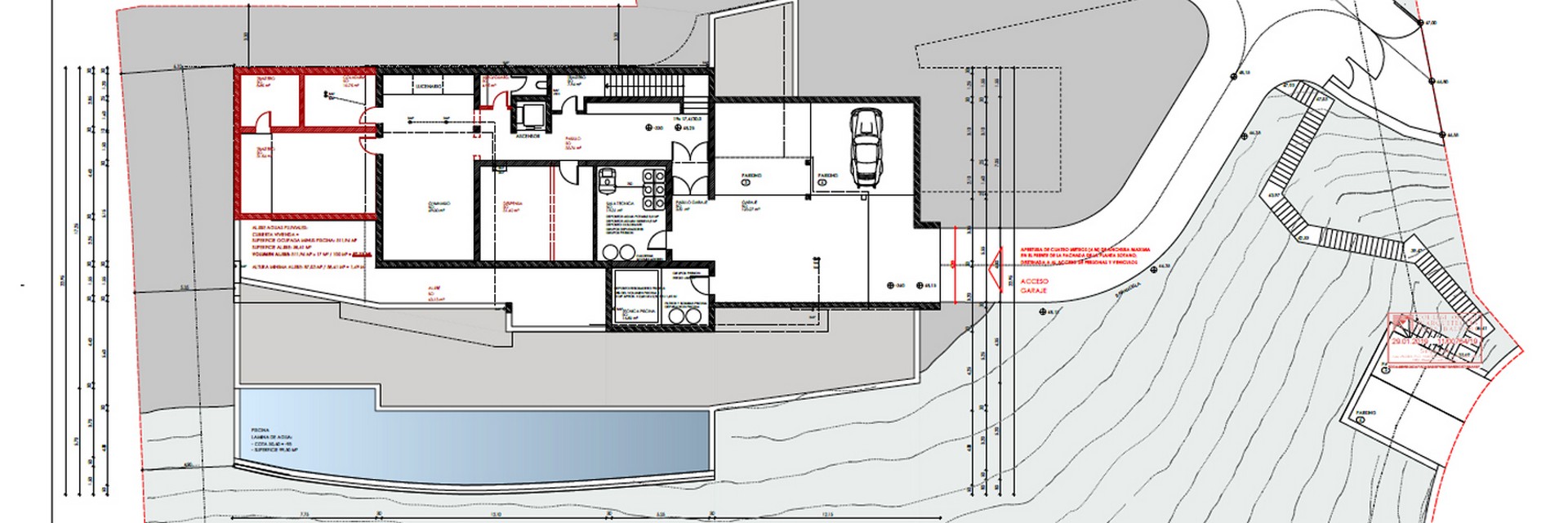MTO, MODIFICATION DURING CONSTRUCTION
The Procedure for Legally Adapting Project Modifications During Construction

During the execution of a project it is common for developers or designers to wish to introduce adjustments to the authorised design. In Mallorca, such changes are managed through the MTO – Modificación en el Transcurso de la Obra (Modification During Construction).
This procedure allows a current Licencia de Obra Mayor (Major Building Licence) to be formally amended, adapting the planning to new needs or circumstances.
A typical case arises when a plot with an already granted building licence is purchased: if the new owner wishes to adapt the design to their requirements, an MTO will normally be necessary. Otherwise, if the executed works do not correspond to the approved and stamped drawings of the licence, the authorities may refuse to grant final acceptance.
- Legal Basis
The MTO is not defined uniformly across Spain. In the Balearic Islands it is regulated by the Reglamento de la Ley de Urbanismo de las Illes Balears (RLUIB) and the municipal ordinances of each town hall.
Each municipality may establish its own specific procedures and requirements.
Important: An MTO cannot be requested if the project only has a Licencia Urbanística (Urban Planning Permit). A Licencia de Obra (Building Licence) must first be obtained, after which modifications can be processed.
- When an MTO Is Required
An MTO must be applied for whenever modifications are intended after the granting of the Licencia de Obra, particularly when affecting:
- Authorised use of the property.
- Urban planning parameters (site coverage, floor area ratio, volume).
- Structural system.
- Volumes, layout, and surfaces.
- Façades and exterior configuration.
- MTO With or Without Suspension of Works
- With suspension of works: required when modifications affect essential parameters such as the number of dwellings, height, volume, land use, building location, or issues related to heritage and environmental protection. In such cases, construction must be halted until the municipality resolves the application.
- Without suspension of works: applicable when changes are limited to interiors or aesthetic aspects without impact on the main parameters. In these cases, work may continue while the modification is being processed.
- Procedure and Documentation
The MTO must always be submitted before executing the changes. Failure to do so may result in an inspection, suspension of works, and possible sanctions.
Required documentation includes:
- Amended technical project with updated drawings and reports.
- Updated cost justification (PEM – Presupuesto de Ejecución Material).
- Revised forecast of construction waste.
- Updated health and safety study.
- Key Aspects to Consider
- Applicable regulations: although planning regulations may have changed during construction, the MTO is assessed under the regulations in force at the time of the original licence application.
- Scope of modifications: if the municipality considers the changes too substantial, the MTO may be refused and a new Licencia de Obra Mayor required.
- Economic impact: if the MTO alters surfaces or volumes, the PEM is recalculated and fees and taxes adjusted. If the PEM remains unchanged, a reduced administrative fee is usually applied.
Conclusion
The MTO is the essential instrument for introducing changes during construction in a legal and secure manner. Depending on the scope of the modifications, a temporary suspension of works may be required.
Thorough preparation of the technical documentation and close coordination with the municipality are decisive to avoid delays and to ensure that the project is completed without complications.